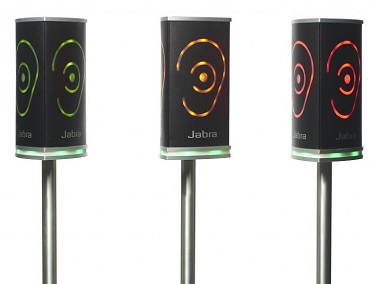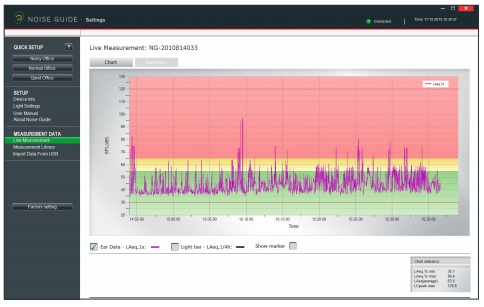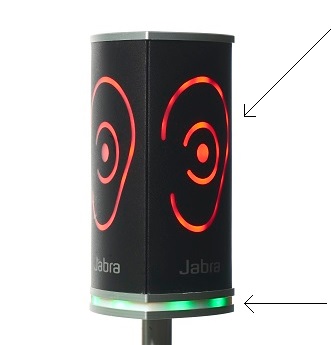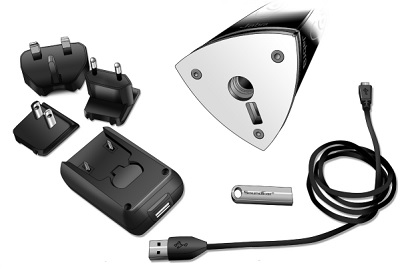There were 10 posts tagged: productivity
Positive Psychology and Happiness: The Secret to Better Work
March 27th, 2018 • 0 Comments
"If I do well at this job, and am successful, then, and only then, will I be happy."
This is the typical thought process about the way to find Happiness: I must work hard, then I will be successful, and then happiness will be the result. But is this true?
Shawn Achor, the author of The Happiness Advantage, has found that, in fact, happiness must come first.
"Waiting to be happy limits our brain's potential for success, whereas cultivating positive brains makes us more motivated, efficient, resilient, creative, and productive, which drives performance upward," writes Achor.
With these positive skills, when you work hard, you're able to enjoy the journey more, which then leads you to even more happiness, because of success! In fact, Achor has found up to 31 percent higher productivity and 21 percent lowered stress levels are achieved, when happiness is an input, rather than an output. Why should we attempt this change? Is it even possible to learn something new once you're in your 30s, 40s, 50s and beyond?
Achor asserts that yes, it is possible for anyone to retrain their brain. And, who doesn't want to be happy?
In "The Happiness Advantage," Achor shares the 7 Principles of Positive Psychology:
Bottom line: "Happiness is not the belief that we don’t need to change; it is the realization that we can." This is an empowering thought, and with the steps that Achor provides, change is possible!
Take about 12 minutes and watch Shawn Achor's TEDx talk, and then buy the book!
This is the typical thought process about the way to find Happiness: I must work hard, then I will be successful, and then happiness will be the result. But is this true?
Shawn Achor, the author of The Happiness Advantage, has found that, in fact, happiness must come first.
"Waiting to be happy limits our brain's potential for success, whereas cultivating positive brains makes us more motivated, efficient, resilient, creative, and productive, which drives performance upward," writes Achor.
With these positive skills, when you work hard, you're able to enjoy the journey more, which then leads you to even more happiness, because of success! In fact, Achor has found up to 31 percent higher productivity and 21 percent lowered stress levels are achieved, when happiness is an input, rather than an output. Why should we attempt this change? Is it even possible to learn something new once you're in your 30s, 40s, 50s and beyond?
Achor asserts that yes, it is possible for anyone to retrain their brain. And, who doesn't want to be happy?
In "The Happiness Advantage," Achor shares the 7 Principles of Positive Psychology:
- The Happiness Advantage
- The Fulcrum and Lever
- The Tetris Effect
- Falling Up
- The Zorro Circle
- The 20 Second Rule
- The Social Investment Solution
Bottom line: "Happiness is not the belief that we don’t need to change; it is the realization that we can." This is an empowering thought, and with the steps that Achor provides, change is possible!
Take about 12 minutes and watch Shawn Achor's TEDx talk, and then buy the book!
Train for Success
October 12th, 2017 • 0 Comments
While some professions require ongoing training for recertification and licensing, such as pharmacy technicians, medical professionals, and accountants, it is truly beneficial for all industries to consider staff training and development as part of their mission. Why? The benefits seem to outweigh the drawbacks, and lead to positive outcomes for both employer and employees.
Here are just a few of the benefits to providing ongoing training and development:
•Staff Retention. Employees see the investment that their organization makes when they provide training opportunities. The employees feel that they can contribute to the organization by attending the training and learning about the ideas presented to them. Hiring new staff, and training them, is a much bigger investment to an organization, compared with a day (or even a week) of sending current employees to a training opportunity.
•Increase skills and productivity. When employees know more, they do more. And, they do it better. For example, providing excellent customer care can get a boost from learning new ways to handle customers and situations. Computer and technical skills can be polished and enhanced with training in the newest technologies and processes available.
•Less supervision. Employees who are confident in their job duties can be trusted to handle those responsibilities independently. This frees supervisors to focus on other areas.
•Increase morale and motivation. Happy employees are successful employees. In a study by the University of Warwick in the United Kingdom, researchers found that happy employees are 12% more productive than those who are not. When employees see the investment a company makes in the employee's career, this makes them feel valued and appreciated.
•Break from day-to-day duties. Taking time away from the daily grind also gives employees the chance to look at situations at work with fresh eyes. Sometimes when sitting in the same spot day after day, year after year, it can be difficult to step back and see the big picture. A day or two away from the workplace can make a huge difference.
Training at the workplace for a few hours, or an entire day
One staff member trains another
An online course
A webinar
These are just a few of the many training possibilities available. Is staff training and development a priority for your organization? Let us know on the Comments tab, above.
Here are just a few of the benefits to providing ongoing training and development:
•Staff Retention. Employees see the investment that their organization makes when they provide training opportunities. The employees feel that they can contribute to the organization by attending the training and learning about the ideas presented to them. Hiring new staff, and training them, is a much bigger investment to an organization, compared with a day (or even a week) of sending current employees to a training opportunity.
•Increase skills and productivity. When employees know more, they do more. And, they do it better. For example, providing excellent customer care can get a boost from learning new ways to handle customers and situations. Computer and technical skills can be polished and enhanced with training in the newest technologies and processes available.
•Less supervision. Employees who are confident in their job duties can be trusted to handle those responsibilities independently. This frees supervisors to focus on other areas.
•Increase morale and motivation. Happy employees are successful employees. In a study by the University of Warwick in the United Kingdom, researchers found that happy employees are 12% more productive than those who are not. When employees see the investment a company makes in the employee's career, this makes them feel valued and appreciated.
•Break from day-to-day duties. Taking time away from the daily grind also gives employees the chance to look at situations at work with fresh eyes. Sometimes when sitting in the same spot day after day, year after year, it can be difficult to step back and see the big picture. A day or two away from the workplace can make a huge difference.
Staff development and training could include:
Attending training as an individual, or with a teamTraining at the workplace for a few hours, or an entire day
One staff member trains another
An online course
A webinar
These are just a few of the many training possibilities available. Is staff training and development a priority for your organization? Let us know on the Comments tab, above.
Quality Monitoring Guidelines for Telemarketing Services
April 13th, 2017 • 0 Comments
By Marcia Jenkins, Senior Operations Manager, Quality Contact Solutions
If you have ever been a sales agent in a seat making or taking calls for a telemarketing services company or an outsourced telemarketing company, you have a good idea of what the primary Do’s and Don’ts for Quality Monitoring are. Sales agents know first hand what helps or possibly hinders their improvement. A good frontline telemarketing sales agent wants nothing more than to succeed, so they thrive on that feedback to get better. Here is a list of Do’s and Don’ts for quality monitoring as compiled by the telemarketing sales agents themselves.
possibly hinders their improvement. A good frontline telemarketing sales agent wants nothing more than to succeed, so they thrive on that feedback to get better. Here is a list of Do’s and Don’ts for quality monitoring as compiled by the telemarketing sales agents themselves.
• Carve out time to listen to their call and other calls that display the technique you want them to improve on.
• Keep it simple. Find one or two things for them to focus on for improvement. Once the improvements are mastered, then go on to additional areas for improvement.
• Plan on role playing with them. This “Do” is essential in not only making sure they know what you want, but can actually display it on future calls. Ensure that they can “walk the talk."
• Follow up. Ensure the agent is implementing the new feedback and if not, have steps in place to redirect. When they are improving, provide Kudo’s! Find them doing the newly mastered technique or attempting and working through it.
• Remind them about why it’s vital to implement. For example, “It is a client expectation and it will help them build their sales revenue and commission.”
• Offer so many little things that need improved upon. Give them a couple of areas to work on and let them overcome those before adding more.
• Be negative. No one responds well to negativity. Keep it positive and upbeat! Try the sandwich technique, starting with a positive, something to work on, then a positive to wrap up the feedback!
• Rush. They know your time is valuable and what better way to show them they are a valuable member of the team then to spend some of your day “Getting on the same page?”
Telemarketing Services team members need to know that we are there to assist them and help them improve. We are all a team on the same page with the same goals.
Whether you are a Telemarketing Service provider or work with an Outsourced Telemarketing company, make sure your team members in the call monitoring role know these Do’s and Don’ts. You’ll find that both morale and productivity will be improved.
Marcia Jenkins is the Senior Operations Manager for Quality Contact Solutions. Prior to joining Quality Contact Solutions, Marcia was a sought-after 10-year call center veteran with the ability to manage and sell. Marcia is responsible for the day to day operations for the At Home Division. QCS At Home is a work-from-home telemarketing and call center solution focused on business to business outbound telemarketing, test-bed projects and special programs which are typically not well-suited for the traditional brick and mortar call center operation. Marcia can be reached at Marcia.jenkins@qualitycontactsolutions.com.
If you have ever been a sales agent in a seat making or taking calls for a telemarketing services company or an outsourced telemarketing company, you have a good idea of what the primary Do’s and Don’ts for Quality Monitoring are. Sales agents know first hand what helps or
 possibly hinders their improvement. A good frontline telemarketing sales agent wants nothing more than to succeed, so they thrive on that feedback to get better. Here is a list of Do’s and Don’ts for quality monitoring as compiled by the telemarketing sales agents themselves.
possibly hinders their improvement. A good frontline telemarketing sales agent wants nothing more than to succeed, so they thrive on that feedback to get better. Here is a list of Do’s and Don’ts for quality monitoring as compiled by the telemarketing sales agents themselves.Do's
• Provide positive feedback. Find something great about their call whenever possible.• Carve out time to listen to their call and other calls that display the technique you want them to improve on.
• Keep it simple. Find one or two things for them to focus on for improvement. Once the improvements are mastered, then go on to additional areas for improvement.
• Plan on role playing with them. This “Do” is essential in not only making sure they know what you want, but can actually display it on future calls. Ensure that they can “walk the talk."
• Follow up. Ensure the agent is implementing the new feedback and if not, have steps in place to redirect. When they are improving, provide Kudo’s! Find them doing the newly mastered technique or attempting and working through it.
• Remind them about why it’s vital to implement. For example, “It is a client expectation and it will help them build their sales revenue and commission.”
Don'ts
• Only send written feedback. Your frontline telemarketing sales agents need to be able to understand what you want from them and ask questions and listen to the call(s).• Offer so many little things that need improved upon. Give them a couple of areas to work on and let them overcome those before adding more.
• Be negative. No one responds well to negativity. Keep it positive and upbeat! Try the sandwich technique, starting with a positive, something to work on, then a positive to wrap up the feedback!
• Rush. They know your time is valuable and what better way to show them they are a valuable member of the team then to spend some of your day “Getting on the same page?”
Telemarketing Services team members need to know that we are there to assist them and help them improve. We are all a team on the same page with the same goals.
Whether you are a Telemarketing Service provider or work with an Outsourced Telemarketing company, make sure your team members in the call monitoring role know these Do’s and Don’ts. You’ll find that both morale and productivity will be improved.
Marcia Jenkins is the Senior Operations Manager for Quality Contact Solutions. Prior to joining Quality Contact Solutions, Marcia was a sought-after 10-year call center veteran with the ability to manage and sell. Marcia is responsible for the day to day operations for the At Home Division. QCS At Home is a work-from-home telemarketing and call center solution focused on business to business outbound telemarketing, test-bed projects and special programs which are typically not well-suited for the traditional brick and mortar call center operation. Marcia can be reached at Marcia.jenkins@qualitycontactsolutions.com.
Jabra Noise Guide Increases Office Productivity - At a Glance!
November 9th, 2016 • 0 Comments
Open office arrangements are conducive to collaboration among colleagues; unfortunately, they are also conducive to distracting background noise! To increase productivity and promote effective sound management, the unique Jabra Noise Guide is a portable device that monitors noise levels in open office environments.
See noise levels fall. Feel productivity rise.
 Similar to a traffic light, the Noise Guide provides immediate visual feedback on noise levels.
Similar to a traffic light, the Noise Guide provides immediate visual feedback on noise levels.
There are three colors:
Green: Go! Conversation is at an acceptable level.
Yellow: Caution! Noise levels are rising.
Red: Stop! Conversation is at an unacceptable level.
Customize sensitivity levels for specific needs. It is pre-set for "Noisy Office" but can be easily changed using the SoundEar 3 software (preloaded on the included USB stick) when the Noise Guide is connected to a PC.
Noise Level Setting Options:
Noisy Office:
•The device is lit green when the noise level is below 60 dB.
•The device is lit yellow when the noise level ranges from 60 dB to 70 dB.
•The device is lit red when the noise level exceeds 70 dB.
Normal Office:
•The device is lit green when the noise level is below 55 dB.
•The device is lit yellow when the noise level ranges from 55 dB to 65 dB.
•The device is lit red when the noise level exceeds 65 dB.
Quiet Office:
•The device is lit green when the noise level is below 50 dB.
•The device is lit yellow when the noise level ranges from 50 dB to 60 dB.
•The device is lit red when the noise level exceeds 60 dB.
You can also choose Customize Settings, to tailor the Noise Guide to your specific environment needs. Jabra suggests an average coverage area of 50 sq. feet.
Measure underlying noise trends. Measure and record daily noise levels over a period of up to three months, to help identify and track problem areas in your office.
 Download noise data to a PC or a USB stick and analyze it using the special SoundEar 3 software.
Download noise data to a PC or a USB stick and analyze it using the special SoundEar 3 software.
The Noise Guide provides you with 2 types of measurements, simultaneously. The ear symbol indicates the state of the current noise level while the LED panel at the bottom of the device indicates the average noise level over the past 15 minutes.
Ensure you're using the latest software version by clicking on the “Software Update." The "Software Update" button links to the web site where you can find the latest software version. Always remember to update your Noise Guide with latest versions of both software (for your PC) and firmware (for the Noise Guide device).
What's in the box? The Noise Guide, USB Key with Software, Power Adapter, USB to micro USB cable
In addition to the Noise Guide, a steel cubicle mount or aluminum table stand, (at a cost of $55.00 each), must be purchased. The portability is a great feature! You can move the Noise Guide between departments, areas, or offices to take advantage of the device. The Table Stand has a table grip that secures the Noise Guide to the desk or table. The cubicle mount rests on top of a divider wall and is clamped into the side.
Now through the end of the year, Jabra is offering a FREE Noise Guide with purchase of 35 of any combination of the Evolve 40, 65, and 80 headsets. Contact us to learn more!
See noise levels fall. Feel productivity rise.
 Similar to a traffic light, the Noise Guide provides immediate visual feedback on noise levels.
Similar to a traffic light, the Noise Guide provides immediate visual feedback on noise levels. There are three colors:
Green: Go! Conversation is at an acceptable level.
Yellow: Caution! Noise levels are rising.
Red: Stop! Conversation is at an unacceptable level.
Customize sensitivity levels for specific needs. It is pre-set for "Noisy Office" but can be easily changed using the SoundEar 3 software (preloaded on the included USB stick) when the Noise Guide is connected to a PC.
Noise Level Setting Options:
Noisy Office:
•The device is lit green when the noise level is below 60 dB.
•The device is lit yellow when the noise level ranges from 60 dB to 70 dB.
•The device is lit red when the noise level exceeds 70 dB.
Normal Office:
•The device is lit green when the noise level is below 55 dB.
•The device is lit yellow when the noise level ranges from 55 dB to 65 dB.
•The device is lit red when the noise level exceeds 65 dB.
Quiet Office:
•The device is lit green when the noise level is below 50 dB.
•The device is lit yellow when the noise level ranges from 50 dB to 60 dB.
•The device is lit red when the noise level exceeds 60 dB.
You can also choose Customize Settings, to tailor the Noise Guide to your specific environment needs. Jabra suggests an average coverage area of 50 sq. feet.
Measure underlying noise trends. Measure and record daily noise levels over a period of up to three months, to help identify and track problem areas in your office.

 Download noise data to a PC or a USB stick and analyze it using the special SoundEar 3 software.
Download noise data to a PC or a USB stick and analyze it using the special SoundEar 3 software.
The Noise Guide provides you with 2 types of measurements, simultaneously. The ear symbol indicates the state of the current noise level while the LED panel at the bottom of the device indicates the average noise level over the past 15 minutes.
Ensure you're using the latest software version by clicking on the “Software Update." The "Software Update" button links to the web site where you can find the latest software version. Always remember to update your Noise Guide with latest versions of both software (for your PC) and firmware (for the Noise Guide device).

What's in the box? The Noise Guide, USB Key with Software, Power Adapter, USB to micro USB cable
In addition to the Noise Guide, a steel cubicle mount or aluminum table stand, (at a cost of $55.00 each), must be purchased. The portability is a great feature! You can move the Noise Guide between departments, areas, or offices to take advantage of the device. The Table Stand has a table grip that secures the Noise Guide to the desk or table. The cubicle mount rests on top of a divider wall and is clamped into the side.
Now through the end of the year, Jabra is offering a FREE Noise Guide with purchase of 35 of any combination of the Evolve 40, 65, and 80 headsets. Contact us to learn more!
Music in the Workplace: Amp Up Your Productivity
September 21st, 2016 • 0 Comments
Want to amp up your output at work and feel energized? Research suggests that listening to upbeat music can bring higher productivity and overall higher feelings of job satisfaction. Give your people the choice of listening to music and watch the work get done!
 Rather than piping music that may not appeal to everyone over office speakers, perhaps a better choice would be individual music players (PC, Smartphones, Tablets)– with corresponding headsets – to personalize the experience. Connecting via USB, Bluetooth, or 3.5mm port, our headsets can handle any set-up. With the same headset, take and make phone calls, and stream your music in between. There is no “one size fits all” environment; providing a variety of headsets to choose from will give your staff the chance to choose the one that’s best for them. Perhaps staying within a brand is recommended, to ensure some type of continuity within your organization.
Rather than piping music that may not appeal to everyone over office speakers, perhaps a better choice would be individual music players (PC, Smartphones, Tablets)– with corresponding headsets – to personalize the experience. Connecting via USB, Bluetooth, or 3.5mm port, our headsets can handle any set-up. With the same headset, take and make phone calls, and stream your music in between. There is no “one size fits all” environment; providing a variety of headsets to choose from will give your staff the chance to choose the one that’s best for them. Perhaps staying within a brand is recommended, to ensure some type of continuity within your organization.
The types of music matter, according to this article from The Telegraph.
Problem-solving or proofreading? Dance music is where it’s at. This genre resulted in a higher overall accuracy and fastest performance across a variety of work tasks. Boogie on down to the best accuracy you’ve ever experienced – and faster!
If you’re working with numbers or extremely detailed information, classical music should be blasting in the background. Spelling errors are also most accurately detected when listening to classical music (12% more!).
To keep up your momentum with data entry tasks, pop music is best. Instrumental, ambient music works well for equation solving. The music tempo can affect productivity – a faster tempo may heighten awareness and produce quicker results; a slower tempo can relax and help you focus on tasks. Overall, though, choosing music that you like best to listen to will ensure your good mood, thus raising your productivity. So, if that music is techno, country, screamo, or Gregorian chants, put that record on and groove.
Wearing a headset could be perceived as rude at your organization (depending upon the environment and expectations) – those with public-facing tasks would probably be discouraged from wearing headsets altogether. Taking regular breaks from wearing a headset may be a good idea to encourage camaraderie with co-workers.
Click on the Comments tab, above, and tell us your favorite music to listen to while you work!
Sources:
"Productivity" Music Works For You
"The Power of Music, Tapped in a Cubicle" New York Times
"Music and Productivity: 5 Ideas for Using Music To Boost Performance" Psychology Today
 Rather than piping music that may not appeal to everyone over office speakers, perhaps a better choice would be individual music players (PC, Smartphones, Tablets)– with corresponding headsets – to personalize the experience. Connecting via USB, Bluetooth, or 3.5mm port, our headsets can handle any set-up. With the same headset, take and make phone calls, and stream your music in between. There is no “one size fits all” environment; providing a variety of headsets to choose from will give your staff the chance to choose the one that’s best for them. Perhaps staying within a brand is recommended, to ensure some type of continuity within your organization.
Rather than piping music that may not appeal to everyone over office speakers, perhaps a better choice would be individual music players (PC, Smartphones, Tablets)– with corresponding headsets – to personalize the experience. Connecting via USB, Bluetooth, or 3.5mm port, our headsets can handle any set-up. With the same headset, take and make phone calls, and stream your music in between. There is no “one size fits all” environment; providing a variety of headsets to choose from will give your staff the chance to choose the one that’s best for them. Perhaps staying within a brand is recommended, to ensure some type of continuity within your organization.The types of music matter, according to this article from The Telegraph.
Problem-solving or proofreading? Dance music is where it’s at. This genre resulted in a higher overall accuracy and fastest performance across a variety of work tasks. Boogie on down to the best accuracy you’ve ever experienced – and faster!
If you’re working with numbers or extremely detailed information, classical music should be blasting in the background. Spelling errors are also most accurately detected when listening to classical music (12% more!).
To keep up your momentum with data entry tasks, pop music is best. Instrumental, ambient music works well for equation solving. The music tempo can affect productivity – a faster tempo may heighten awareness and produce quicker results; a slower tempo can relax and help you focus on tasks. Overall, though, choosing music that you like best to listen to will ensure your good mood, thus raising your productivity. So, if that music is techno, country, screamo, or Gregorian chants, put that record on and groove.
Wearing a headset could be perceived as rude at your organization (depending upon the environment and expectations) – those with public-facing tasks would probably be discouraged from wearing headsets altogether. Taking regular breaks from wearing a headset may be a good idea to encourage camaraderie with co-workers.
Click on the Comments tab, above, and tell us your favorite music to listen to while you work!
Sources:
"Productivity" Music Works For You
"The Power of Music, Tapped in a Cubicle" New York Times
"Music and Productivity: 5 Ideas for Using Music To Boost Performance" Psychology Today


